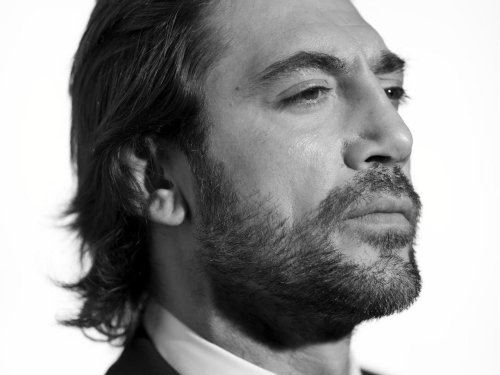Zygmunt Bauman : “Nos sociétés refoulent des populations entières hors du corps social
Il y plusieurs grilles de lecture pour tenter de comprendre l’attentat contre Charlie Hebdo. Le multiculturalisme de façade de nos sociétés qui excluent les plus humbles en est une, estime le célèbre penseur Zygmunt Bauman.
Corriere della Sera
14 janvier 2015

Zygmunt Bauman à Prague, le 22 octobre 2012 – AFP/Michal Cizek
Superficialité du multiculturalisme, soumission aux lois du marché qui excluent les plus humbles et en font des “parias” du progrès sociotechnologique, humiliation de l’autre. Tels sont les mécanismes fondamentaux que le regard vertical de Zygmunt Bauman décèle dans les événements de Paris.
Le philosophe et sociologue polono-britannique d’origine juive est un grand interprète de la modernité, qui dilue les édifices compliqués de notre vie en un continuum “liquide” et fuyant. “L’assassinat politique est une forme de violence directement liée aux antagonismes humains, difficile à éradiquer”, déclare Bauman au Corriere della Sera.
En quoi la violence politique dirigée contre Charlie Hebdo diffère-t-elle des autres ?
Il faut souligner une première différence avec les attentats du 11 septembre 2001, dirigés non pas contre des personnages connus ou jugés responsables de crimes, mais contre des symboles du pouvoir économique et militaire, le World Trade Center et le Pentagone. En s’attaquant à des objectifs d’une grande valeur médiatique, l’assaut du 7 janvier 2015 reflète au contraire la conscience publique d’un glissement progressif du pouvoir réel vers les lieux où se créent les opinions.
En outre, l’attaque contre le journal a été conçue comme un acte de vengeance “personnel”, en vogue depuis la fatwa lancée par l’ayatollah Khomeyni en 1989 contre Salman Rushdie pour ses Versets sataniques. Si le 11 septembre 2001 “dépersonnalisait” la violence politique, en s’efforçant de provoquer le plus grand nombre de victimes et d’accaparer l’attention, le 7 janvier répond à la désinstitutionalisation et à l’individualisation de la condition humaine dans notre société. Dans ce contexte, ceux qui fabriquent et distribuent l’information deviennent les protagonistes du drame du vivre-ensemble.
Un vivre-ensemble menacé par le sentiment d’aliénation que les minorités ethnico-religieuses éprouvent souvent dans des sociétés fragmentées. Comment le rapport à l’islam s’insère-t-il dans ce mécanisme ? La tragédie de Paris, ville paradigme des valeurs occidentales, ouvre-t-elle un nouveau chapitre de la guerre séculaire entre les civilisations et les religions ?
Les lectures de ces derniers jours focalisées sur l’antagonisme entre le christianisme et l’islam recèlent une part de vérité, mais ne peuvent pas embrasser la totalité d’un phénomène complexe. L’élément décisif pour comprendre les nouvelles dynamiques doit être recherché, à mon avis, dans un monde marqué par les diasporas. Le voisin avec qui nous partageons rues, structures publiques, écoles et lieux de travail était hier encore un lointain étranger. Une proximité déstabilisante, puisque nous ne savons pas à quoi nous attendre. Et, à l’inverse de ce qui se passe dans la dimension virtuelle et sur les réseaux “sociaux”, il n’est pas possible de supprimer ou d’ignorer d’un clic des différences presque trop réelles, inconciliables avec notre point de vue.
Les réponses que nous avons concoctées jusqu’ici se sont révélées un échec. Un multiculturalisme superficiel, une fascination pour la diversité ont envahi nos vies, qui se traduisent par un goût de la cuisine ethnique ou des festivals du dimanche, de simples flirts avec un brin d’exotisme. Des variantes du consumérisme mondial au temps de Facebook. Un système qui reconnaît la légitimité de cultures différentes de la nôtre, mais ignore ou refuse tout ce qu’elles comportent de sacré et de non négociable. Ce manque d’un respect authentique s’avère profondément humiliant.
Une humiliation qui peut rendre la situation sociale explosive ?
C’est le propre de l’humiliation que de chercher une forme d’absolution ou de réparation. Quand cela arrive, nous découvrons que les frontières entre ceux qui humilient et ceux qui sont humiliés se superposent aux frontières entre privilégiés et dominés. Nous vivons sur un terrain miné, sans pouvoir prévoir les prochaines déflagrations.
En ce sens, le roman de Michel Houellebecq sorti en France le jour de l’attentat, Soumission, a-t-il vu juste ?
Soumission est la deuxième grande dystopie [récit de fiction qui décrit un monde utopique sombre] de Houellebecq après La Possibilité d’une île. Dans ce livre, Mohammed Ben Abbes [du parti Fraternité musulmane] remporte la présidentielle française de 2022 au coude à coude avec Marine Le Pen. Un couple loin d’être fortuit. Peut-être prophétique, si nous ne réussissions pas à inverser le cours d’une Histoire qui a trahi les espoirs de liberté et d’égalité colportés par la démocratie.
Nous assistons à la montée d’un sentiment antidémocratique dans toute l’Europe, à une sécession en masse d’une nouvelle plèbe qui converge vers les deux extrêmes de l’échiquier politique, attirée par les promesses de l’autocratie. La parole du Prophète rassemble ainsi sous sa bannière les humiliés, les marginaux, les exclus, assoiffés de vengeance.
Quelle réponse apporter ? Vous soutenez que la force de la morale réside dans la liberté consciente du “je”, et pas dans le pouvoir coercitif d’un “nous” impersonnel. Le refus du fondamentalisme part de là ?
Dans sa première Exhortation apostolique : Evangelii Gaudium (du 24 novembre 2013) le pape François a mis le doigt sur la grande soumission, notre capitulation devant un capitalisme licencieux, effréné, aveugle à la misère humaine. Vous ne trouverez pas de réponse plus profonde et exhaustive à cette question. Le souverain pontife a dénoncé cette culture du “paria”, qui va au-delà de l’exploitation et bannit des populations entières des progrès du bien-être, des masses qui ne sont plus simplement opprimées ou marginalisées mais bien refoulées “hors” de la communauté, “hors” du corps social. Cela est absolument inacceptable, et nous devons nous y opposer.
Propos recueillis par Maria Serena Natale












